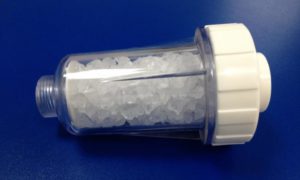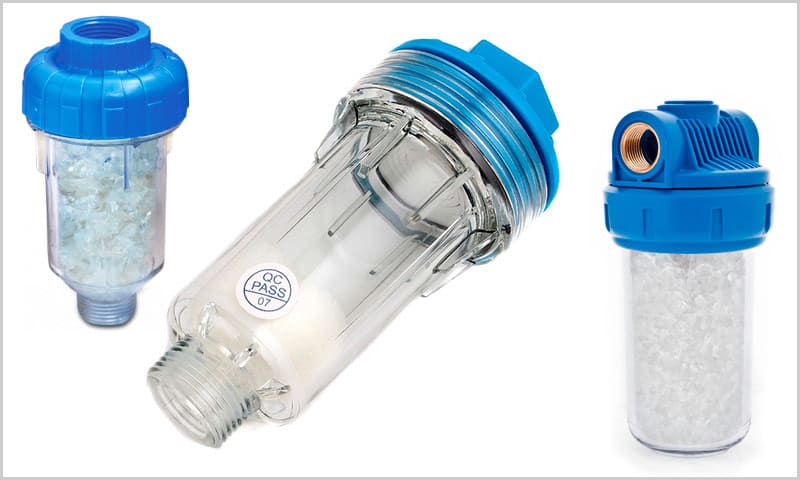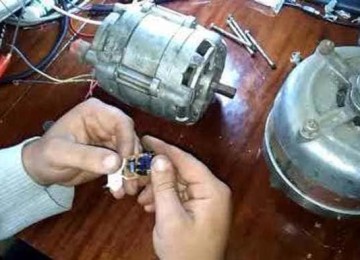 Devices for washing clothes have long become common household appliances in any family. They were once considered a luxury item, but today washing machines have made the work of many housewives easier, saving their free time and energy. When purchasing SMA, consumers are primarily focused on the pricing policy and functionality of washing equipment, and are interested in the duration of its operational period. After all, the desire for the machine to work as long as possible is quite logical and normal. It should be noted that the state of the equipment largely depends on the quality of the water used for washing, which sometimes leaves much to be desired. In such situations, filtering devices come to the rescue, one of which is a salt filter for a washing machine.
Devices for washing clothes have long become common household appliances in any family. They were once considered a luxury item, but today washing machines have made the work of many housewives easier, saving their free time and energy. When purchasing SMA, consumers are primarily focused on the pricing policy and functionality of washing equipment, and are interested in the duration of its operational period. After all, the desire for the machine to work as long as possible is quite logical and normal. It should be noted that the state of the equipment largely depends on the quality of the water used for washing, which sometimes leaves much to be desired. In such situations, filtering devices come to the rescue, one of which is a salt filter for a washing machine.
Protective filter device
A simple model of a polyphosphate filtration unit consists of two elements. At the bottom there is a transparent plastic container, inside of which polyphosphates are filled. It is closed with a lid that has two holes for connecting the water supply and drainage pipes.
Manufacturers offer a large selection of salt filter devices at very affordable prices. The models are compact; the full load of the flask is one hundred to one hundred and fifty grams.Under normal operating conditions, the average consumption of salt filling will be from two to six grams per hundred liters of water, which corresponds to the frequency of replacing the filler approximately twice a year.
There are more complicated filter designs that have certain features:
- The pipe located in the center evenly distributes the flow of water. The inlet and outlet holes are located in the lid; there are no holes in the lower part of the flask, which increases its strength and prolongs its service life;
- built-in bypasses make it possible to replace the polyphosphate filler without turning off the water supply to consumers;
- a drainage valve built into the bottom helps to quickly remove dirt accumulation;
- There are filters with timers, which makes it easier to control the amount of working backfill. This configuration allows the installation of a salt flask made of opaque materials;
- mesh filters prevent mechanical impurities from entering the equipment;
- Replaceable cartridges are easy to use and can be installed quickly. Special shapes ensure correct installation and tightness of the entire device;
- the most complex models have built-in dispensers. Their operation is possible only with the use of special cartridges filled at the factory.
When choosing a salt filter to protect your washing machine, it is recommended to pay attention not only to its design, but also to its compliance with certain parameters:
- threaded connections must be present for easy connection to the pipeline;
- external parameters;
- minimum dosage;
- chemical elements and reagents contained in the composition;
- device brand, manufacturing company. In the future, this will help you easily purchase the necessary backfill;
- compliance with the standards and requirements of sanitation and hygiene.
Operating principle of the filter element

Scale is formed due to the presence of magnesium and calcium in the water. Water passing through the filter system dissolves the filler, which creates a protective film that protects machine parts from scale formation.
The device is a container with a flask into which polyphosphate salts are poured. The flask is closed with a sealed lid with a pair of holes intended for connecting water pipes.
Water moved through the filter dissolves salts that bind magnesium and calcium molecules, preventing them from settling on parts in the form of scale.
How to install a salt filter
Such a device is connected in a certain way. The algorithm of actions is as follows:
- the washing machine is disconnected from the water supply network, for which you just need to turn off the tap;
- during installation, a threaded pipe is used, onto which the bulb is screwed;
- it is possible to install a filter on the water intake hose of the washing unit;
- Once the installation work is completed, the water supply is restored.
Advantages and disadvantages of the filter

The main advantage of this technology is its low costs. The simplest model of the device will cost you several hundred rubles, and wholesale supplies of salts will require from 2.4 to 2.8 thousand rubles per ten kilogram.And it is quite possible to do the installation work on your own, as well as replace the flask filler without any problems.
In order for the comparative analysis to gain objectivity, the negative aspects should be dealt with. The most important one is harm to the environment. Manufacturers claim that polyphosphate salt does not pose a danger, but water saturated with such compounds should not be used for drinking. It can cause allergies; it is recommended to avoid contact of such liquid with the skin and mucous membranes. According to official instructions, water that has passed through a salt filtration device is suitable exclusively for technical purposes.
Having studied in detail the principle of operation of the salt filter, we can identify several more disadvantages. For example, the speed of dissolution of polyphosphate salt depends on the temperature and speed of passage of the liquid, and the presence of other impurities in it. It turns out that the consumer does not have the opportunity to regulate the effectiveness of the technology, taking into account specific situations. This remark refers to the degree of water hardness, which cannot be quickly corrected.
Polyphosphate salts act at a distance of tens of centimeters, so you will have to consider installing a protective device in close proximity to the washing unit.Note that the salt filter is installed at the rate of one unit for each type of household appliance. Given this fact, it will be necessary to organize periodic checks and replenish spent reagents, which will significantly complicate the maintenance process, since there is no way to automate it. Another problem is that under different operating conditions, the flask filler is consumed unevenly.

However, many consumers use salt filters, unanimously identifying a number of clear disadvantages:
- when the temperature of the liquid exceeds forty degrees, the efficiency of the technological process is significantly reduced;
- with increased workload, phosphate deposits are formed that do not dissolve;
- a zone of increased thermal exposure activates the formation of chemical compounds based on phosphate and iron, which provoke corrosion.
As a rule, the optimal amount of filler to fill is 5 grams per cubic meter of water. An important point is also noted - salts dissolve unevenly, this process depends on the temperature of the incoming liquid and the size of the granules of the filler itself. The salt should be replaced as soon as less than half of the added amount remains in the flask.
Conclusion
Basically, salt filters are considered an ideal option for cleaning and softening liquids. Especially when it is not possible to install a reverse osmosis device or other types of water softeners.









